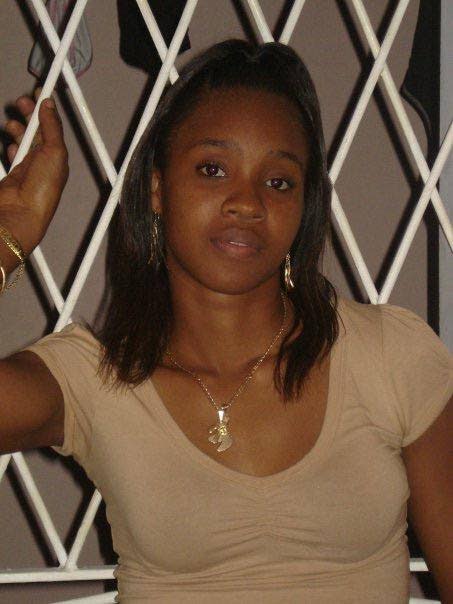UPDATE: The dream fight that never materialised

THE untimely death of world champion Jizelle Salandy on January 4, 2009 has left a gaping hole in women’s boxing in TT. At 21 years old, Salandy had already broken the world record for most belts won in a single fight and was a national award recipient. With a perfect record of 16-0, Salandy was poised for even greater things.
Months before her death, there was local chatter that Salandy was being lined up to face Laila Ali, the retired former world champion and daughter of boxing legend Muhammad Ali.
It was Potts’ plan to have Salandy call Ali out of retirement for one final duel in the ring. The only hurdle was that the two boxers were in different weight classes. Salandy competed at super welterweight and the heavier Ali contested the super middleweight.

Although there was nothing cast in stone, some local boxing enthusiasts questioned whether Salandy would have been putting her health at risk by getting into the ring with Ali, who had built a reputation as a knockout artist (24-0, 21 knockouts). Her power appeared to be too much for Salandy to handle. But Salandy’s camp held a different view.
Former boxer Kim “Bone Crusher” Quashie, who introduced Salandy to the sport at White Eagle Gym in Siparia, said the plan was for Salandy to put on about ten pounds, while Ali would have had to lose ten.
She was confident Salandy would have stained Ali’s unblemished record.
“Jizelle would have walked around Laila Ali, and I’m not asking you! When we were preparing Jizelle for this so-called ‘Laila fight,’ we decided we would do a catchweight,” she said.
A catchweight is a term used in combat sports, such as boxing or mixed martial arts, to describe a weight limit that does not adhere to the traditional limits for weight classes. In boxing, a catchweight is negotiated before weigh-ins, the day before the fight.
At that time, Ali seemed to have left boxing behind, and went Hollywood with a career on television with Dancing with the Stars and as host of a revived American Gladiators series.
Her exit from boxing never seemed to bother Salandy’s handlers, who believed they could get her back in the ring.
“Laila was a flat-footed fighter,” said Quashie. “Once Jizelle was fully equipped and moving, it would have been good for her. If you stand up and allow Laila to enter, she will pound you.
“When Jizelle went abroad and trained with the late Emmanuel Steward, he was amazed. He said if Jizelle was training like this, there was no way Laila was going to catch her. To hit a person, you have to catch them first. It was indeed a plan to fight Laila.”
Steward (1944-2012) was an American boxer and trainer who worked with 41 world champion fighters throughout his career, most notably Thomas Hearns, Lennox Lewis and Wladimir Klitschko.
Salandy’s manager and promoter, Boxu Potts, shared a similar view and was also part of the discussion with Steward on Salandy.
“We went to train with Emmanuel Steward in the Pocono Mountains in Pennsylvania and we were having a discussion about Laila Ali. We shared the same opinion. Taking nothing away from Laila, she’s a credit to boxing, a good fighter, one of the best in her weight class in her era and was a formidable opponent and strong force to be reckoned with.”
He told Steward that Salandy would have to give away a lot of weight and that Ali would have been bigger and stronger. In order to have the endurance, carry that weight and absorb Laila’s powerful punches, Potts and Steward planned to teach Salandy how to ride the punches and not stand and absorb them.
Potts believed the only way to conquer Ali was to be tactically and technically sound.
“By the time Laila set to hit Jizelle, we planned for her to be in, out and long gone, giving Laila a tough time to catch Jizelle. We did not worry about Jizelle catching Ali’s punches, but on her getting in and out and hitting her before Ali hit that reset button.
“We were planning to tag her on the reset – just before she pressed, we were going to take her out.”

Though she was not known for knockout power, Potts believed Salandy would have gone the full distance with the American and eked out a decision.
Potts has been criticised in some quarters for his handling of Salandy, but Quashie said, “Between all those boxing promoters in TT, Boxu was the best, he makes it happen. Boxu is very knowledgeable.
“He has his ways, but who is perfect? Boxu will take a fighter and take them from point B to point Z in a couple months, because he has the know-how.”
But would that game plan have been enough? Salandy’s skill set was clear in the ring: speed, nifty footwork, head movemenet and ring IQ. But she lacked the power to finish off opponents, something Ali was never accused of.
If Potts was able to pull off the match-up, it would have been arguably the greatest sporting spectacle in TT history.
Salandy’s best friend, Tamar Watson, who was in the car that crashed and killed the TT boxer, told Newsday, “She was extremely enthusiastic about fighting…I mean, beating Laila Ali. She was confident that she would have. I think it would have been one of the highlights of her life. She was very passionate about that.”


Comments
"UPDATE: The dream fight that never materialised"